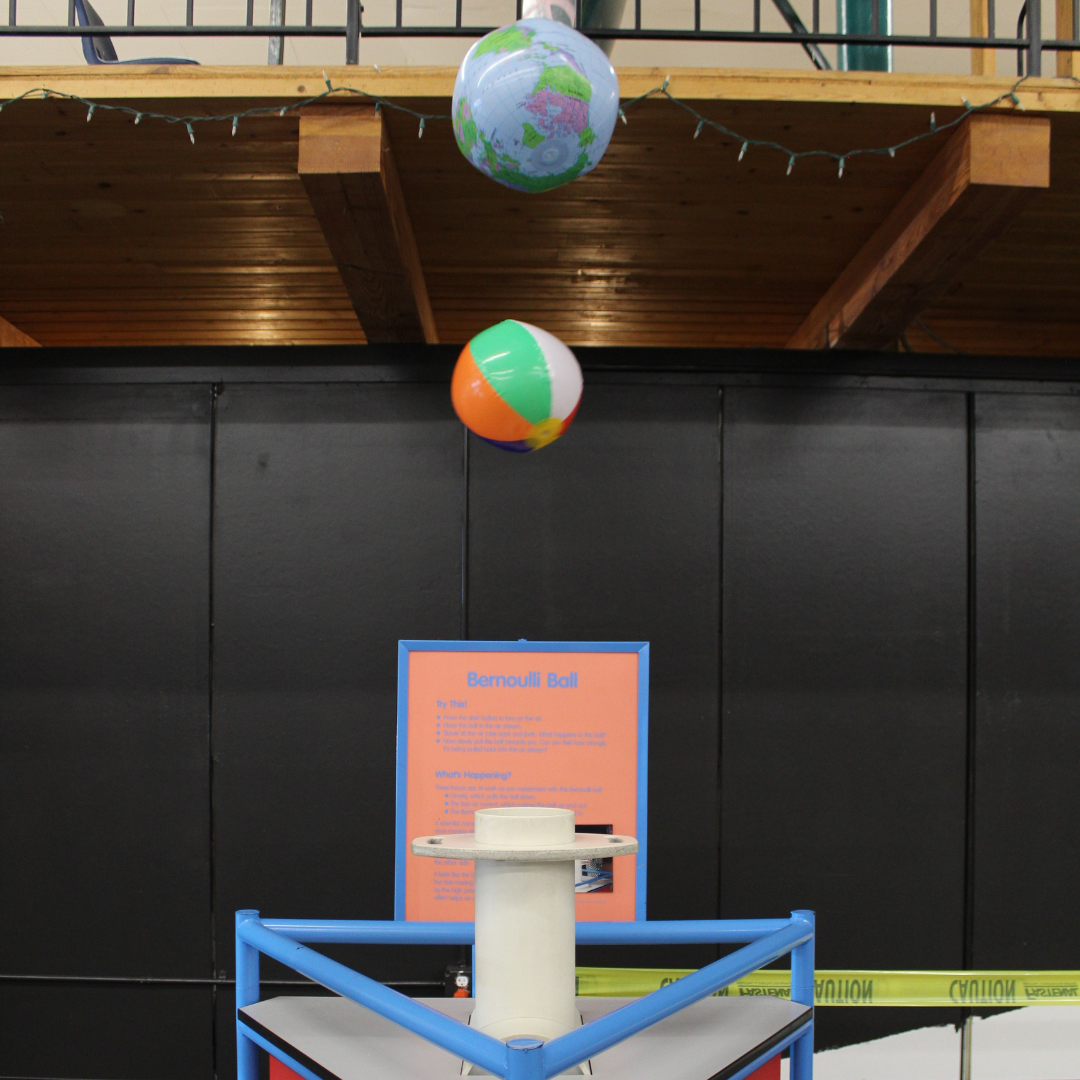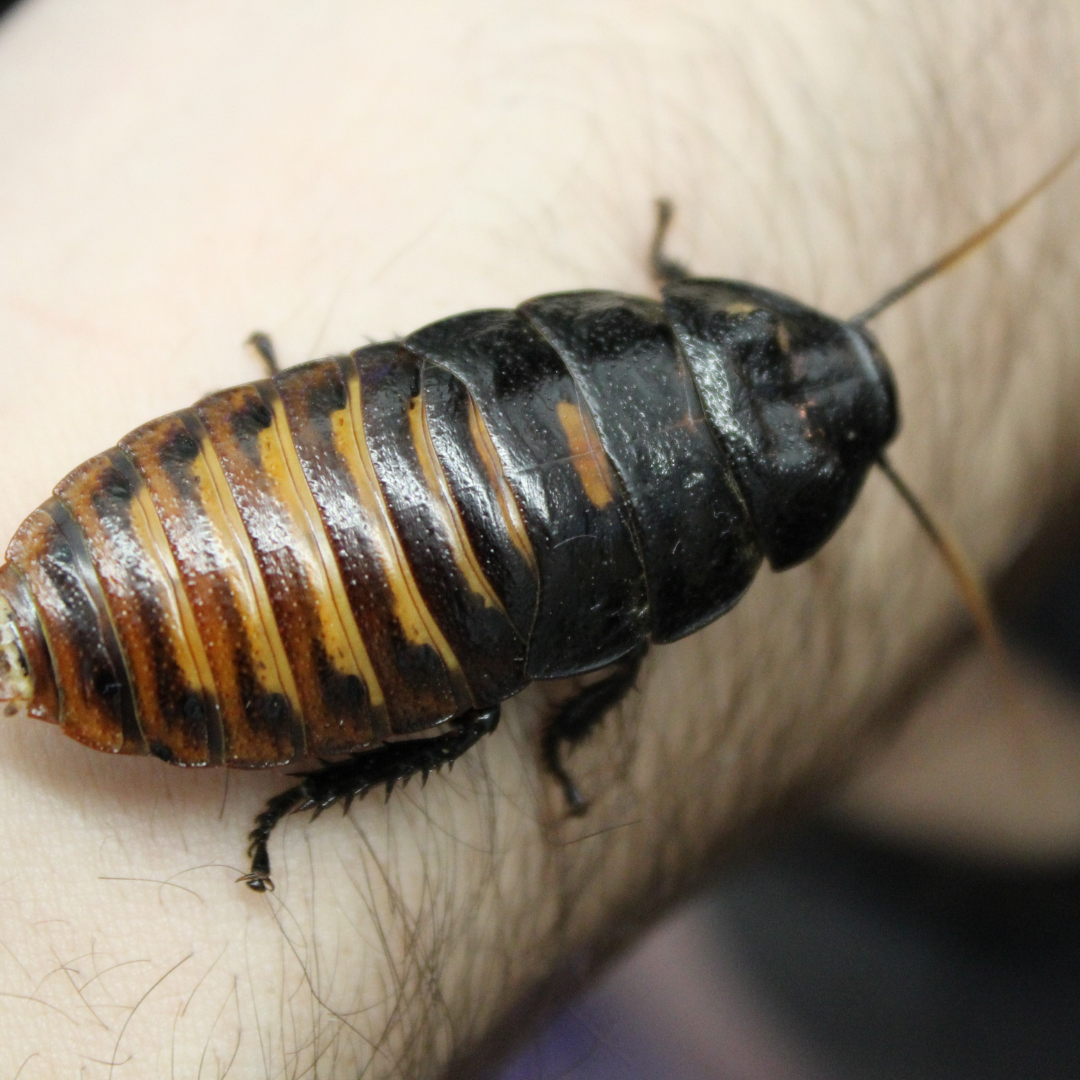Exhibits
The HSC exhibit floor is 7,500 sq. feet and is self-guided and hands-on. Most exhibits require active participation by the visitor. Some require dexterity and/or creativity, but all result in better understanding and appreciation of scientific principles and concepts. More than 70 hands-on exhibits and a variety of animals await your visit. Stop back often, as we are constantly building and adding more exhibits. For the complete list of Exhibit alignment to MN's State Grad Standards, click here.
Looking to have a program or demo brought to you? Call HSC or complete this form HSC Request Form

Augmented Reality Sandbox
The Augmented Reality Sandbox holds sand in the box with colors that change. The changes happen based on the elevation of the sand, similar to a topographic map. You can "make rain” (hold hand above the exhibit) and observe how the water moves on the “map” showing how waters move, acting as a model of a watershed.

Big Blue Blocks
The Big Blue Blocks can be used to build large structures. Includes cylindrical blocks to facilitate extra stability for taller structures. Use cylindrical to build moving parts. Blocks can be used to construct experiments about geological history, motion, mass, change, speed, gravity, force, and more!

Bear Den
The HSC Bear Den is an opening in the wall with a teddy bear inside. Guests are encouraged to think about the different types of homes that animals have and how all animals need shelter.

Bones & Skulls
The HSC bones and skulls are rotating skeletal specimens from the HSC collection. This may also include replica specimens, either casts (such as the hominid skulls) or in-house 3D prints.

Finch
HSC has had up to sixteen finches in an aviary near the front entrance. There are multiple species present, which invites conversations about how animals interact with one another in the wild. The fact that there are multiple species, but they are all still “finches” also invites conversations about how we categorize animals into groups.

Freshwater Aquariums
The fresh water aquariums are warm water tanks featuring tropical freshwater fish, and cold water tanks featuring mostly local species. We also have local fish species housed in tanks with some of our turtles.

Lizards
The HSC lizards are of various sizes and origins in Critter Corner (HSC). Lizards are a great example of a really diverse group of animals, very well illustrating specific adaptations to the environmental pressures they would encounter in the wild. It is fun to talk about the differences between snakes and lizards.

Pitching Cage
The pitching cage is a RADAR gun used to measure speed of pitches. The gun depends on the doppler effect, measuring the perceived distortion of emitted radio waves as they bounce off the moving ball and come back to the receiver.

Saltwater Aquariums
The HSC salt water aquariums are warm water tank featuring tropical fish and invertebrate species. Most species present are native to the Indo-Pacific region around Australia and Indonesia.

Snakes
HSC Snakes come in a variety of sizes from the size of a pencil to more than seven feet in length. HSC snakes eat mice and rats, which are shipped frozen to HSC but thawed to room temperature and heated to normal body temperature just before feeding them to the snakes on HSC Snake Feeding Day. In the wild, HSC snakes eat small mammals, birds, amphibians, fish and other reptiles.

Tarantulas
The HSC tarantulas, similarly to snakes, are often maligned among “Critters”. We only do very limited contact with them, currently.
Tarantulas will go through many different defensive postures when feeling threatened before biting, so they are useful when discussing how many animals really don’t want to attack or fight a human. It is valuable to about the differences between arachnids and the other arthropods.
Tarantulas will go through many different defensive postures when feeling threatened before biting, so they are useful when discussing how many animals really don’t want to attack or fight a human. It is valuable to about the differences between arachnids and the other arthropods.

Trout
Trout arrived at HSC one November as eggs, and have grown throughout the year, allowing guests to see many phases of their juvenile lives before they are released as part of the DNR’s stocking program.
We also have some that we’ve kept and have develop even further, so that now the older life phases are on exhibit.
We also have some that we’ve kept and have develop even further, so that now the older life phases are on exhibit.

Turtles
The Headwaters Science Center has several turtles and tortoises of varying species. Rosie, the snapping turtle, is often used for talking about albinism and introductory genetics. Sunny, the tortoise, invites conversations about the animal rehabilitation process, as well as hibernation. Comparing the shape of the shells between turtles allows one to talk about different lifestyles. Turtles are also one the few carrion eaters housed at HSC.
HOURS:
Monday - Saturday: 9:30 AM - 5:00 PM
Sunday: 1:00 - 5:00 PM
HOLIDAY CLOSINGS:
HSC is closed:
New Year's Day
Easter Sunday
Thanksgiving Day
Christmas Eve
Christmas Day
Also closed annually for e-cubed fundraiser.
ADMISSION:
Children (2-11 years old): $7.00
Adults (12+ years old): $10.00
Seniors (65+ years old): $9.00
Military: $9.00


